UPSC Daily Current Affairs- 6th September 2023 | Current Affairs & Hindu Analysis: Daily, Weekly & Monthly PDF Download
GS-I
Adopt a Heritage 2.0 Programme
Subject: Art and Culture
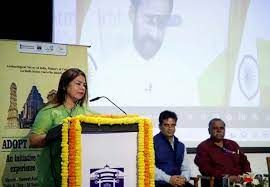
Why in News?
The Archaeological Survey of India (ASI) has launched “Adopt a Heritage 2.0: Apni Dharohar, Apni Pehchaan” Programme to preserve India's Cultural Heritage.
- The ASI also introduced the “Indian Heritage” app. It is meant to serve as a comprehensive guide to India’s heritage monuments.
Adopt a Heritage Programme
- The programme was launched under the Ministry of Tourism and recently got shifted to the Ministry of Culture.
- Under this programme, ASI invites corporate stakeholders to enhance amenities at the monuments (Monument Mitras) by utilising their Corporate Social Responsibility (CSR) funds.
- Under the Section 135 under the Companies Act, 2013 companies with a networth of over Rs 500 crore or turnover of Rs 1,000 crore or net profit of Rs 5 crore during a financial year, are mandated to spare 2 percent of their net profit made during three fiscals towards CSR.
Source: PIB
Pulau Semakau
Subject: Geography

Why in News?
The landfill in Pulau Semakau Island is projected to be filled in just over a decade
About Pulau Semakau
- Located approximately 8 km south of Singapore.
- It was once home to a Malay village on the western side of the island and a small Chinese village at the south-western end.
- Singapore’s only landfill is located here .
- It is home to coral reefs, mangroves and rare birds like Great-billed Herons.
Source: The Hindu
GS-II
Black Sea Grain Initiative to resume soon: Turkey
Source: International Relations
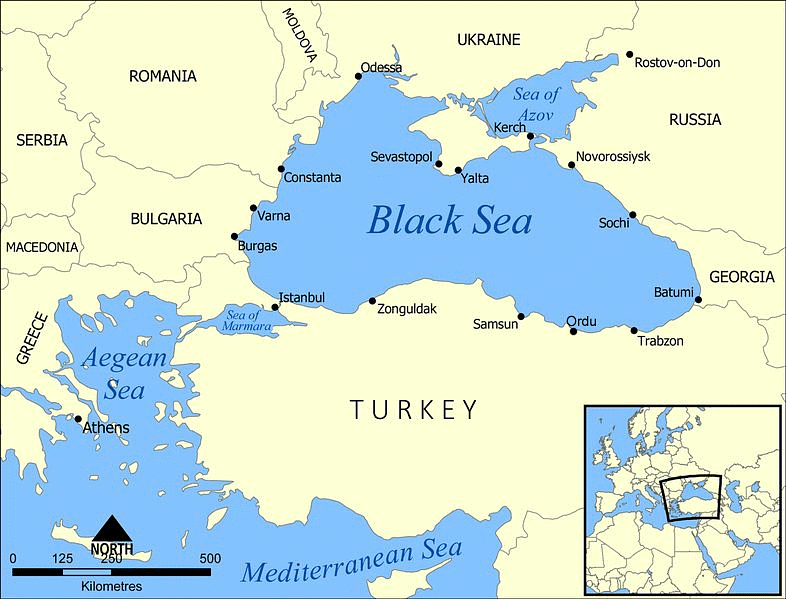
Why in News?
The Black Sea grain deal lapsed on July 17. Turkey now seeks to resume the treaty.
- Russia though had not agreed to renew the deal, citing unmet promises and difficulties in its own agricultural exports due to Western sanctions.
Black Sea Grain Initiative
- The Initiative eased Russia’s naval blockade and saw the reopening of three key Ukrainian ports.
- The UN and Turkey brokered the deal in July 2022, allowing cargo ships to travel between Ukrainian ports and undergo inspections to ensure they were not carrying arms.
- The deal has been extended twice but is set to expire on July 17, 2023.
- The agreement created procedures to safely export grain from certain ports to attempt to address the 2022 food crisis.
- It provides a safe maritime humanitarian corridor for Ukrainian exports (particularly for food grains) from three of its key ports: Chornomorsk, Odesa and Yuzhny/Pivdennyi in the Black Sea.
Outcomes of this deal
- Approximately 9.8 million tonnes of grains have been shipped so far since the deal was brokered.
- People hoarding the grain in the hope of selling it for a sizable profit owing to the supply crunch were now obligated to sell.
- The initiative has also been credited for having made a huge difference in the global cost of living crisis.
Why was this deal launched?
- Ukraine’s Role: Ukraine is a significant exporter of food grains, including wheat and corn, and contributes to the UN’s food aid programs.
- Impact of Russian Invasion: Russia’s invasion and blockade of Ukrainian ports raised concerns about food security and soaring prices globally.
Russia’s Opposition and Reasons
- Claims of Unmet Promises: Russia argues that promises made under the deal have not been fulfilled, affecting its own agricultural exports and fertilizers due to Western sanctions.
- Obstacles to Agricultural Exports: Russia faces challenges with payment platforms, insurance, shipping, and logistics, even though there are no direct restrictions on its agricultural products.
- Frustration and Goodwill: Russian President expressed frustration and stated that Russia has shown goodwill in extending the deal but feels enough is enough.
- Shift in Grain Destinations: Russia claims the deal was meant to ensure global food security, but Ukraine has mainly exported to high- and middle-income countries, while the UN notes that food prices have cooled down, benefiting poorer nations.
Impact on Grain Exports and Production
- Russian Wheat Export Dominance: Russia remains the world’s top wheat exporter, primarily targeting the Middle East, North Africa, and Central Asia.
- Ukraine’s Declining Shipments: Ukraine’s grain shipments are projected to more than halve, with production at an 11-year low.
- Shifting Markets: Ukraine’s grain markets have shifted from Asia and North Africa to Europe, driven by ease of shipment, causing a glut of Ukrainian grain and protests from farmers in Eastern European countries.
Source: The Hindu
Decoding the Nyaya Sanhita Bill
Subject: Polity and Governance
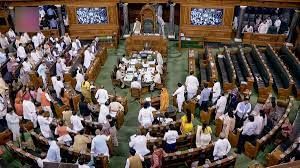
Why in News?
The government recently introduced three key penal bills in a bid to reform the justice system.
Central Idea
- The recent introduction of three penal bills in the Lok Sabha by the government, aimed at decolonizing the Indian justice system, is a significant step in the realm of legal reform. While this initiative is commendable, it is crucial to recognize that the process of law-making and reform requires careful consideration and empirical validation.
Bharatiya Nyaya Sanhita Bill
- This bill aims to replace the existing Indian Penal Code (IPC) of 1860.
- The IPC defines crimes, sets out their elements, and prescribes corresponding penalties.
- The Bharatiya Nyaya Sanhita Bill seeks to update and modernize the criminal laws to better reflect evolving societal values and democratic aspirations.
Why Public Participation Matters in Legal Reform?
- The Colonial Legacy: Learning from Past Mistakes
- The colonial penal law was replaced not due to inherent flaws but because it lacked participation from the Indian populace, imposing foreign ideas and values.
- Recognizing the crucial need for broad public participation to avoid repeating this historical oversight
- Macaulay’s Principle Revisited: Seeking Legal Certainty Through Debate
- Reflecting on Thomas Babington Macaulay’s principle of “uniformity when you can have it, diversity where you must have it, but in all cases certainty.”
- Emphasizing the goal of achieving equal and uniform application of the law through meaningful debate.
- Stressing the significance of precise legal terminology for clarity and legal certainty.
What constitutes undesirable behavior?
- Changing Norms: The Evolution of Legal Definitions
- Highlighting the evolving societal perceptions concerning behaviors deemed undesirable.
- Citing examples like the transition of attempted suicide from a criminal offense to a recognized mental health issue under Section 115(1) of the Mental Health Care Act, 2017.
- Examining the Supreme Court’s role in redefining adultery and its legal implications
- From Offense to Health Issue: The Case of Attempted Suicide
- Illustrating the transformation of attempted suicide from a crime to a mental health concern, reflecting a more compassionate and holistic approach.
- Challenging Tradition: Adultery and the Supreme Court Decision
- Analyzing the Supreme Court’s decision to redefine adultery and emphasizing the judiciary’s role in adapting to evolving social norms
- The Call for Social Audit: Rethinking “Undesirable” Behavior
- Advocating for a comprehensive social audit to redefine the concept of “undesirable” behavior, taking into account changing societal perspectives.
- Stressing the importance of empirical analysis in this process.
- Independent Oversight: The Need for Impartiality
- underscoring the necessity of an independent and impartial body to conduct the social audit to ensure fairness and objectivity in evaluating behavioral norms.
How to Balance Simplicity and Complexity in Penal Laws?
- Simplification’s Promise: Streamlining the Legal Framework
- Acknowledging efforts to simplify the legal framework through the Bharatiya Nyaya Sanhita and highlighting potential benefits like enhanced clarity and efficiency in legal procedures.
- The Challenge of Overload: Retaining and Adding Offenses
- Addressing concerns about the risk of retaining and introducing new offenses, which could offset the advantages of simplification and potentially overwhelm the legal system.
- Revisiting Special Laws: The Malimath Committee’s Proposal
- Noting the proliferation of special penal laws post-Indian Penal Code to address emerging crimes.
- Suggesting an evaluation of whether these should be incorporated into the Bharatiya Nyaya Sanhita or managed through existing special laws or a new composite law, as proposed by the Malimath Committee.
Addressing Gender and Children’s Rights: What the Bill Says?
- Constitutional Alignment: Article 15(3) and Article 51A(e)
- Recognizing the alignment of the proposed Offenses Against Women and Children’ with the constitutional vision, specifically referencing Article 15(3) and Article 51A(e),
- Outdated Notions: Analyzing Clause 63 on Marital Rape
- Highlighting concerns with Clause 63, which excludes sexual intercourse between spouses above 18 from the definition of rape, and drawing parallels with colonial-era legal thinking
- Contradictory Provisions: Clauses 20 and 21 vs. Juvenile Justice Act of 2015
- Pointing out inconsistencies between retaining Clauses 20 and 21 in Chapter III (General Exceptions) and the philosophy of special laws for children outlined in Section 1(4) of the Juvenile Justice Act of 2015.
What does the new penal law prioritize?
- A Shift in Focus: Departing from the Colonial Framework
- Recognizing a departure from the colonial chapter scheme that favored the interests of the ruling class over body and property offenses.
- Placing bodily interests in Chapter VI, just before offenses against the state, indicating a significant shift in priorities.
- Measuring against the Constitution: Article 13(2)
- Raising questions about whether the proposed reforms will align with the constitutional vision enshrined in Article 13(2), which prohibits laws that infringe upon fundamental rights.
- Upholding Values: Autonomy, Equality, and Fraternity
- Highlighting the vital role of the proposed reforms in upholding principles of autonomy, equality, and fraternity as guaranteed by the Preamble of the Constitution
Conclusion
- The government’s initiative to reform the Indian justice system is laudable, but it must be accompanied by extensive public participation, a thorough examination of undesirable behavior, and a balanced approach to legal complexity. Only through careful consideration and a commitment to justice can the Bharatiya Nyaya Sanhita Bill truly decolonize and rejuvenate the Indian justice system.
Source: The Hindu
Gujarat Declaration
Subject: International Relations
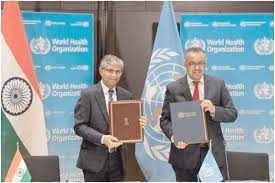
Why in News?
Recently the two day WHO Traditional Medicine Global Summit 2023 was held at Gandhinagar, Gujarat.
About
- The World Health Organization (WHO) has released the outcome document of first WHO Traditional Medicine Global Summit 2023 in the form of “Gujarat Declaration”.
- The declaration will focus on the integration of traditional medicines in national health systems and help unlock the power of traditional medicine through science.
Outcome of Gujarat Declaration
- The declaration reaffirmed global commitments towards indigenous knowledge, biodiversity and traditional,complementary and integrative medicine (TCIM).
- Accelerate the production, regulation, and formal utilization of scientifically proven TCIM products and practices.
- Advance policies that promote standardized TCIM documentation, including through expanded and accelerated use of the WHO International Classification of Diseases (ICD-11) to enable integration of evidence and data collection on TCIM in a standardized way within routine health information systems.
- Establish a global network of TCIM reference clinical centers that can routinely undertake standardized data collection and monitoring based on WHO ICD-11 coding of the implementation.
- Appropriate development and application of digital health technologies, and artificial intelligence (AI) to advance digital health resources on TCIM for people’s health and well-being.
- Actions should be promoted and taken at all levels to safeguard, restore and sustainably manage biodiversity, and to ensure the fair and equitable sharing of the benefits arising from the use of biodiversity resources, related genetic material and Indigenous knowledge.
- Fully recognize, respect and protect the rights of Indigenous Peoples, as provided in the UN Declaration on the Rights of Indigenous Peoples.
Source: PIB
GS-III
Urban Cooperative Banks (UCBs): Concerns and Considerations
Subject: Economics
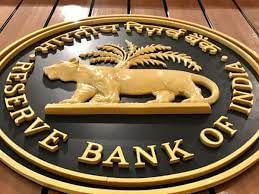
Why in News?
The Reserve Bank of India (RBI) Governor recently addressed the issues and vulnerabilities surrounding Urban Cooperative Banks (UCBs), highlighting the importance of addressing these concerns.
What are Urban Cooperative Banks (UCBs)?
- UCBs are primary cooperative banks primarily situated in urban and semi-urban areas, catering to the financial needs of small borrowers and businesses.
- They are governed by the Banking Regulations Act, 1949, the Banking Laws (Cooperative Societies) Act, 1955, and registered under the Cooperative Societies Act of the respective State.
- Initially, UCBs were permitted to lend exclusively for non-agricultural purposes; however, they have diversified their size and operations since 1996.
- Approximately 79% of UCBs are concentrated in five states: Andhra Pradesh, Gujarat, Karnataka, Maharashtra, and Tamil Nadu.
Types of UCBs
UCBs are categorized into different tiers by the RBI based on their deposit size:
- Tier 1: Deposits up to Rs 100 crore.
- Tier 2: Deposits ranging from Rs 100 to 1,000 crore.
- Tier 3: Deposits between Rs 1,000 to Rs 10,000 crore.
- Tier 4: Deposits exceeding Rs 10,000 crore.
Key concerns/addresses raised by RBI
(1) Operational Stability
- UCBs must enhance their financial and operational resilience to contribute to the overall stability of the financial and banking sector.
- The quality of governance within UCBs plays a pivotal role in ensuring the stability of these individual banks.
(2) Setting up right priorities
- Boards and directors of UCBs must prioritize integrity and transparency in financial reporting, refraining from innovative accounting practices that obscure the actual financial position.
- Proactive management of Asset Liability is essential to manage liquidity risk systematically.
- Establishing robust IT and cybersecurity infrastructure, along with the availability of necessary skills at the bank level, is crucial.
- Governance practices, especially those related to Compliance, Risk Management, and Internal Audit, need strengthening.
(3) Functioning of Boards
- Ensuring directors possess adequate skills and expertise.
- Constituting a professional board of management.
- Considering the diversity and tenure of board members.
- Promoting transparent and participatory board discussions.
- Ensuring the effective functioning of board-level Committees.
(4) Credit Risk Management
- Upholding risk management through robust underwriting standards.
- Implementing effective post-sanction monitoring.
- Timely recognition and mitigation of emerging stress.
- Pursuing follow-ups with large Non-Performing Asset (NPA) borrowers to facilitate recovery and maintain adequate provisioning.
Conclusion
- Addressing the concerns and vulnerabilities in Urban Cooperative Banks is vital for the overall stability and resilience of the banking sector.
- The RBI’s recommendations highlight the importance of governance, risk management, and transparency in ensuring the health of UCBs.
Source: The Hindu
Invasive alien species
Subject: Environment and Ecology

Why in News?
The Intergovernmental Science-Policy Platform on Biodiversity and Ecosystem Services (IPBES) released a report on the status of invasive alien species (IAS).
What are Invasive species?
- Alien species are animals, plants and microbes that have been introduced by humans to new regions. Of these, invasive alien species have negative impacts on nature.
- The characteristics of invasive alien species are:
- Rapid reproduction and growth,
- High dispersal ability,
- Phenotypic plasticity (ability to adapt physiologically to new conditions), and
- Ability to survive on various food types and in a wide range of environmental conditions.
Examples of invasive alien species
- Diseases such as malaria, Zika and West Nile Fever are spread by invasive alien mosquito species like Aedes albopictus and Aedes aegyptii.
- Spread of water hyacinth (Pontederia crassipes) in Lake Victoria has affected the population of tilapia fish and affected livelihoods and nutrition of people in the area.
Negative impacts of Invasive Alien Species
- Assessment Report finds that more than 37,000 alien species have been identified across the world out of which 3500 are invasive.
- Extinction of species: Invasive alien species have been a major factor in 60 per cent and the only driver in 16 per cent of global animal and plant extinctions that have been recorded, and at least 218 invasive alien species have been responsible for more than 1,200 local extinctions.
- Economic loss: IAS led to a loss of more than $423 billion in 2019 and the report points out that they are among the five top drivers of biodiversity loss along with changes in land-and sea-use, direct exploitation of species, climate change and pollution.
Concerns
- The report found that the measures are not sufficient to control the IAS as of now.The report also shows that 45 percent of all countries do not invest in the management of biological invasions.
- While 80 percent of countries have targets related to managing invasive alien species in their national biodiversity plans, only 17 percent have national laws or regulations specifically addressing these issues.
Way Ahead
- Future biological invasions, invasive alien species, and their impacts, can be prevented through effective management — preparedness, early detection and rapid response. The reports suggest that when eradication is not possible, efforts should be made to contain and control the IAS.
- What is needed is a context-specific integrated approach, across and within countries and the various sectors involved in providing biosecurity, including trade and transportation; human and plant health; economic development and more.
Source: DTE
|
38 videos|5293 docs|1118 tests
|
















